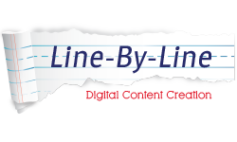As a business owner, you write every day. Before the day is over, you may have written countless emails, submitted project proposals and contributed to your company’s blog or newsletter.
Although it is you writing all of these things, they shouldn’t all be written the same way. They shouldn’t all “sound” the same.
To be most effective, you will need to consider your audience and purpose, and adjust your writing voice accordingly.
What is a Writing Voice?
Much has been written and debated about our writing voice, or the way we “sound” when we write. Some believe we are born with our own unique style, others believe we can learn it, still others are certain its as individual as our personalities and we can’t learn it, escape it or change it – we just have to find it.
Yesterday, I wrote an email to a potential client. Afterwards, I wrote a blog post for my website. Later, I wrote a sympathy card to a very close friend. My voice was behind each of these items, but my email was businesslike, my blog post was informative, and my card was sympathetic and personal. All were written by me, but each had a unique tone and style.
I do believe each of us portrays a bit of our own personalities and personal styles into what we write. But I also think we can and should adjust our voice to better communicate with our audiences. Sometimes we do this naturally. Sometimes we have to consciously make it happen.
Why is Voice Important?
The voice we use when we write helps our audience understand our purpose. It gets their attention and keeps it. When our audience feels we relate to them, it establishes credibility. We become a professional or authority. It ultimately helps us sell our products and services.
If you work at a bank, you will want to use a professional, informative and trustworthy voice. If you own a funeral home, your voice will be sympathetic and reassuring. Using humor, trendy expressions or a casual voice would not be appropriate for either of these industries. You would sound unprofessional, and possibly even offensive.
However, if you were writing for a young rock band, a hip teenage clothing store or a mommy blog, a casual or humorous voice would speak well to your audience. Anything professional or formal could be ineffective and come off as stuffy and out-of-touch.
How to Decide What Writing Voice To Use
Not sure how you should “sound”? Here are five steps to consider when deciding on your writing voice.
- Define your audience. Who will be reading your writing? What are their ages, backgrounds, and education levels? You will write differently to an educated audience than you would to a group of middle school students.
- Know your purpose. Are you trying to educate your audience about your cause? Are you trying to persuade your audience to buy a product or support a candidate? Know what you want to accomplish before you start writing.
- Consider how well your audience understands your topic. Are you writing for a trade organization where everyone knows the industry? Or are you writing to the general public who may not know the specifics of your subject? You will need to explain things more and avoid industry jargon if the audience is not familiar with your topic.
- Understand the outlet you are writing for. A press release written for the media will need to have a journalistic style, with the most important information reported first. A blog may take on a more casual, informal tone. A newsletter article will be customer-focused and friendly.
- What action do you want your audience to take? What is your call to action? You will need to use a persuasive voice if you want your audience to buy something. You will be more instructional if you want to educate your audience about new information.
Following these important steps before you begin writing will help you identify your writing voice, and make your audience feel like you are speaking directly to them.
If you’d like to receive my best advice, please join my mailing list:

